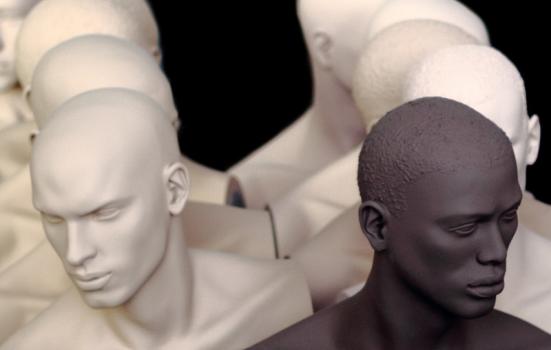Survey findings reveal a deep division in opinion among arts workers about how to increase the diversity of the sector’s workforce.

DryHundredFear via Visual Hunt / CC BY
The arts sector is deeply conflicted about the best way to improve diversity in its workforce, the findings of a new survey suggest.
The majority of respondents to ArtsProfessional’s Pulse survey of attitudes towards diversity in the arts said that their organisation was committed to improving the diversity of its workforce. 83% said that more workforce diversity was either a top strategic priority for their organisation or that it was important.
But in terms of action to improve diversity, there was a significant difference in the views of arts workers in under-represented groups. While most respondents expressed a preference for targeted initiatives, training and incentives, people from Black and minority ethnic backgrounds (BME) and those with disabilities – two groups that are under-represented in the sector’s workforce according to the latest figures – were more likely than most to favour penalties, quotas and naming and shaming.
The survey took place in June and July this year and the first report, which analyses the 509 UK-based respondents’ views about workforce diversity, was published this week.
Barriers to diversity
From a list of potential barriers to increasing diversity in the workforce, the highest number of respondents identified ‘a shallow pool of diverse candidates for work opportunities’ as a problem. 61% agreed that this affected their organisation.
Most disagreed that trustees, senior management or a lack of expertise were hindering their organisation’s attempts to become more diverse, although junior workers were more likely to point the finger at management – 28% of those in junior roles said senior management were a barrier, compared with just 8% in senior roles.
‘Inadequate funding’ was identified as a barrier to increasing workforce diversity by 41%. Comments also made reference to poor recruitment methods, such as not advertising widely enough, and setting unreasonable requirements of potential candidates.
White middle class norms
Elitism within arts organisations, or the “tyranny of normal” as one respondent put it, was also pointed to as a major barrier. One respondent wrote: “The organisation has been very inward looking and tends to recruit in its own likeness. It has a reputation for being all white, middle class and elitist.”
Some identified financial barriers to entering the arts, such as the expectation for entry-level workers to work for little or no pay and more wider cultural issues that may mean some people in under-represented groups are less likely to perceive the arts as an aspirational sector to work in.
The decline of the arts in schools and rising costs of higher education were concerns for many. Respondents thought this could lead to a less diverse range of young people considering careers in the arts.
Ways forward
When asked about ways to increase diversity, more than eight out of ten respondents favoured staff training, targeted initiatives to boost diverse organisations and incentives to increase the diversity of those entering arts careers. But there was much less consensus around whether penalties, quotas and ‘naming and shaming’ should be introduced.
43% said staff quotas should not be introduced, compared to just 25% who said they should, with the rest uncertain. However, the 18% of respondents who identified as BME were much more likely to say quotas should be introduced: 45% were in favour and just 30% against.
BME respondents also came out in favour of financial penalties (50% for; 33% against) and ‘naming and shaming’ those with a poor track record in diversity (52% for; 37% against) – suggestions that white respondents were against.
The 9% of respondents with a disability sided overall against penalties, quotas and naming and shaming, but they were on average slightly more in favour than non-disabled respondents.
Many expressed criticisms of quotas and concerns about what would happen if they were implemented in a “simplistic” way. One said they would lead to “suspicion and resentment on both sides”.
But some were more positive. One respondent wrote: “Many in the sector claim ‘quotas don’t work’. Have they tried them? They seem to be working well at the BBC.” Another wrote: “It may be that a clumsy tool like [quotas] is needed to get the ball rolling.”
Click to read ArtsProfessional’s latest news, research and features on diversity in the arts




